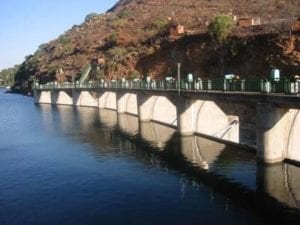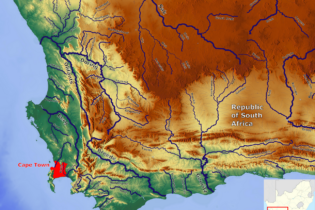The WRC’s latest water history offering has just been published. The new book, In the Footsteps of Giants – Exploring the History of South Africa’s large dams, is now available following four years of painstaking research. The glossy, full colour publication of 340 pages takes the reader on a journey through the history of South Africa’s largest dams, starting with the traditional attitudes and indigenous knowledge around water resources prior to European settlement and ending with a glimpse into the future of dam building in the country.
This valuable historical resource explores the reasoning behind the construction of these massive structures, the laws that guided their development, and the people and institutions that made them possible. Woven in between are the tales behind some of the country’s most iconic dams and dam engineers. This is the first time that such a publication has been on offer for a wider audience in South Africa. “While dams are no longer considered the sole answer to improving access to water resources, there is no denying the role that these impressive structures have played in the history and development of South Africa,” says Dhesigen Naidoo, WRC CEO. “The country’s estimated 500 large dams hold back millions upon millions of litres of water, allowing us to pursue activities that would otherwise have been near impossible in a semi-arid climate,” adds Dhesigen. “Dams bring us water for consumption in our large cities, irrigation to grow our crops, water to drive our main economic ventures and to generate power, all while holding back huge volumes of floodwaters that might have otherwise engulfed our settlements.” Lani van Vuuren, the author of this historical resource says: “A lot of the information captured in this book has never been written down, and I had to consult many retired engineers from the Department of Water Affairs, for example, who were extremely willing to share information with me. I also had a lot of help from town museums and the South African Institution of Civil Engineering, as well as eWisa, who greatly assisted me with the sourcing of photographs. Unfortunately during my research I discovered that our government department libraries have gone through a terrible time, for example, many of the earlier documentation on dams held at DWA, for example, no longer exists.” Far from being mere earth and concrete structures, our dams serve as monuments of our past and beacons on our path to socio-economic prosperity. Behind each dam lies a tale of imaginative thinking, daring spirit, and resolve to make South Africa a better place to live in. South Africa’s history of dams goes back at least five centuries.“Many of our most important dams, such as Hartbeespoort, Loskop and Vaal dams, were built with nothing more than bare hands and sheer determination. This book is dedicated to the pioneering engineers who dared to dream big, but also to the thousands of labourers who toiled in the sun and dust for years at a time to turn dreams into reality as well as the families who supported them,” adds Lani.
“We are unlikely to see many more of these large water development projects in the future. They form an inextricable part of our national water heritage, and just like any other water infrastructure, like water distribution pipelines and treatment works, they need to be maintained and looked after.” As South Africa gears up to tackle its latest bulk water infrastructure development, namely Phase II of the Lesotho Highlands Water Project, it is hoped that the lessons captured in this book will go a long way to ensuring the sustainable development and management of the country’s large dams going forward. Until we can find a reliable alternative to dams as a way to store water in South Africa it is up to the new generation of dam builders to devise and implement schemes to sustainably manage our water resources, which must be matched by a commitment to retain or conserve as far as possible the fragile ecosystems on which they are constructed.The book is available from the WRC – tel: (012) 330 0340









